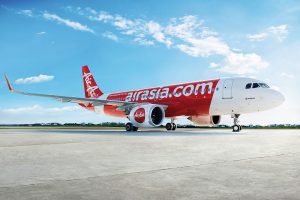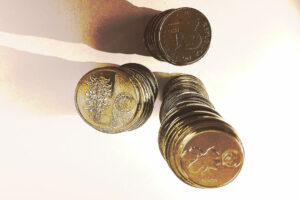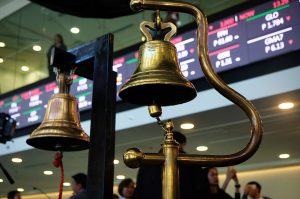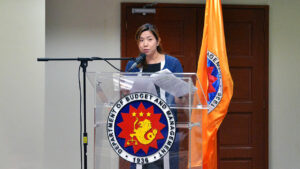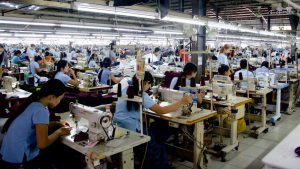By Ashley Erika O. Jose, Reporter
THE Civil Aeronautics Board (CAB) has announced it will lower the airline fuel surcharge for July, reducing airfare costs for domestic and international flights.
In an advisory on Thursday, the Civil Aeronautics Board said that it will reduce the fuel surcharge, which is added to the base fare, to Level 5 for July 1-31, down from Level 6 in June. This marks the first reduction since March.
At Level 5, the domestic passenger surcharge ranges from P151 to P542, while for international flights, the surcharge varies between P498.03 and P3,703.11.
A fuel surcharge may be collected by airlines based on movements in jet fuel prices, using a benchmark known as MOPS (Mean of Platts Singapore).
At the current Level 6, the domestic passenger surcharge ranges from P185 to P665, while the international surcharge ranges from P610.37 to P4,538.40.
“Airlines wishing to impose or collect fuel surcharges for the same period must file their applications with this office on or before the effectivity period, with fuel surcharge rates not to exceed the above-stated level,” the CAB said in the advisory.
For July, the CAB said the applicable conversion rate is P58.07 to a dollar.
“Over the past five months, fuel surcharge remained at a high of Level 6. The reduction to Level 5 next month means that guests can now anticipate lower fees,” Steve F. Dailisan, head for communications and public affairs at AirAsia Philippines, said in a Viber message on Thursday.
AirAsia Philippines said it will continue to cushion the impact of the fuel volatility by offering its lowest fares every month with its seat sales.
GREEN FUEL USEFurther, local airlines said that despite the anticipated increase in the supply of sustainable aviation fuel (SAF), its utilization in the country will remain low.
According to a report issued by International Air Transport Association (IATA) this month, the production of SAF is expected to triple in 2024 to 1.9 billion liters.
Still, even with the projected increase in supply, the overall supply of SAF is expected to account for only 0.53% of aviation’s fuel needs, IATA said.
“SAF will provide about 65% of the mitigation needed for airlines to achieve net zero carbon emissions by 2050. So the expected tripling of SAF production in 2024 from 2023 is encouraging. We still have a long way to go, but the direction of exponential increases is starting to come into focus,” IATA Director-General William M. Walsh said in an IATA report dated June 2.
IATA said that increasing the production of renewable fuel, which is shared by many industries, will help accelerate the production of SAF.
It said that about 140 renewable fuel projects with the capability to produce SAF are already in the pipeline for production by the end of the decade.
If realized, the total renewable fuel production capacity could reach 51 million tons by 2030, which can be distributed across almost all regions, IATA said.
In the Philippines, the Department of Energy (DoE) announced it created a committee on SAF in March, comprised of representatives from the Department of Agriculture, Department of Science and Technology, Department of Finance, Department of Trade and Industry, and other relevant government agencies to help accelerate the utilization of green fuel in the Philippines.
A representative from the DoE’s Renewable Energy Management Bureau told BusinessWorld in a Viber message that the committee is scheduled to have its first meeting next month.
“The committee’s deliverable is the crafting of a SAF roadmap, which will serve as a guide to align activities of relevant stakeholders towards the country’s short-, medium-, and long-term targets and objectives,” it said.
The DoE said the National Biofuel Board is set to create recommendations to the Energy department for the issuance of guidelines and policies to fast-track the SAF developments in the country.
In March, President Ferdinand R. Marcos, Jr. said that the Philippines secured a commitment from Airbus, an aerospace company, to collaborate with the Transportation department on sourcing energy from landfills for biofuels and its eventual use in the aviation sector.
SAF can help reduce emissions from air transportation, being made from nonpetroleum feedstock like agricultural waste and used vegetable oil.
The International Air Transport Association has estimated that SAF will contribute around 65% of the reduction in carbon emissions needed by the aviation sector to reach net zero by 2050.
“We think the SAF industry is still in its infancy and needs to scale up to meet aviation demand for lower-carbon fuels. What we also are looking forward to is the availability of the SAF supply in the airports where we fly to. Availability is one driver for us to be able to utilize SAF,” budget carrier Cebu Pacific said in a Viber message.
Even with the tripling of the green fuel output production, the supply is very limited, Cebu Pacific said, adding that the projected SAF supply is still less than 1% of the aviation industry’s total fuel requirement.
“We naturally anticipate that economics will work — increases in supply lead to a reduction in costs. However, aviation industry experts do not anticipate that SAF price will match jet fuel price anytime soon,” it said.
Further, for flag carrier Philippine Airlines (PAL), it said it had already lined up potential SAF and Carbon Offsetting and Reduction Scheme for International Aviation (CORSIA) certified suppliers.
CORSIA permits airlines to utilize SAF made from biomass or waste to lessen their carbon offsetting obligations.
“We look forward to the availability of these products to enable us to make firm orders and we need the SAF to be CORSIA Certified in order to qualify in reducing our carbon footprint,” PAL President and Chief Operating Officer Stanley K. Ng said in a Viber message.
For now, PAL’s sustainability plans remain, which is to operate SAF-powered flights to Singapore by 2026, Mr. Ng said.
Currently, PAL has no SAF-powered flights yet but the company is targeting to have at least 1% SAF blend for its Singapore flights by 2026.
This is in line with the Singapore government’s requirement that flights departing from its airport must use at least 1% SAF by 2026
“We believe incentives combined with mandates will accelerate the take up of SAF, there is interest now,” Mr. Ng said.
Meanwhile, Malaysia-based airline group Capital A Berhad, operating as AirAsia said part of its net zero target is to use SAF across the whole group which includes its operations in the Philippines starting next year.
“All AirAsia Philippines aircraft are certified to use SAF blended up to 50% with jet fuel. However, it currently does not operate SAF powered flights due to high cost and supply availability limitations,” AirAsia Philippines’ Mr. Dailisan said in an e-mail.
The airline’s target for SAF utilization is to achieve a blend of at least 2% or 40.62 tons by 2025, increasing to a maximum of 70% or 1.9 million tons by 2050.

